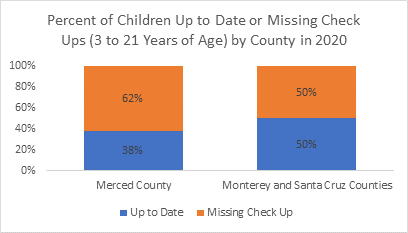Spread the word: Don’t skip the second dose!
According to CDC data, over 70% of Americans 12 years and older have received at least one dose of the COVID-19 vaccine (as of Aug. 3). However, trends indicate that many people are missing their second dose, leaving our communities less protected from COVID-19.
As of August 6, about 44% of Alliance members were fully vaccinated, with around 8% of members partially vaccinated. The Alliance is asking our community partners to share with your patients/clients the importance of getting fully vaccinated. It will take a collaborative effort to communicate the importance of receiving both vaccine doses.
Here are some key reasons to get the second dose. Please share with Alliance members and your wider network!
- More protection. Getting both doses of a two-dose vaccine, such as Moderna or Pfizer, has been shown to more effectively protect against COVID-19 compared to just getting the first dose.
- Slowing the spread. In addition to greater protection for themselves, Alliance members who get the second dose can help protect their communities. Thus far, studies indicate that our current vaccines are effective against coronavirus variants, including the highly aggressive and transmissible Delta strain. With rapidly increasing cases of the Delta variant, it is vital that we increase vaccination rates in our communities to minimize further surges of serious illness, hospitalization and death.
Important things to remember about the two-dose COVID-19 vaccines:
- The second dose must be from the same vaccine manufacturer as the first. For example, if Alliance members receive the Moderna shot for their first dose, they should receive a second dose that is also from Moderna.
- The second dose doesn’t have to be administered at the same location as the first shot. For example, if an individual is traveling or moved to a different state, they can schedule their second vaccine at a different site.
- Can’t make it to the second appointment? Re-schedule! Vaccine appointments can be rescheduled, including appointments for the second dose. Note that second-dose appointments should be made within the proper time window from the date of the first dose (three weeks for Pfizer and four weeks for Moderna).
- If a member missed the time window for their second shot, they don’t have to restart their vaccine series! Individuals can receive their second shot even if they are getting it late.
More information about COVID-19 vaccines that require two doses is available on the CDC website.
You can direct community members to make an appointment at a vaccination site near them by visiting www.myturn.ca.gov or www.vaccines.gov. For Santa Cruz County members, you can also reference the County of Santa Cruz Health Services Agency vaccine calendar for a list of upcoming clinics that don’t require appointments.
Back-to-school is here. Are our children ready?
Schools are back in session, but many children in our communities have not seen their pediatrician for critical well-child visits. Families have been staying home much of the last school year, doing their part to slow the spread of the COVID-19 virus. This has resulted in many children missing checkups and recommended vaccines.
During 2020, about one in three Alliance members (38%) in Merced County ages 3-21 years had a well-child visit, according to a recent Alliance audit. The same Alliance audit also found that children in Monterey and Santa Cruz counties fared slightly better, with half (50%) of children receiving a checkup last year.

Many parents don’t fully understand how important it is to take their child to see a pediatrician when the child is well. Well-child and well-adolescent visits give parents the chance to ask questions and get expert answers. These visits provide the opportunity to discover physical, developmental or emotional issues early on, and provide critical interventions that could make a big difference in the child’s outcome. Most importantly, well-child and well-adolescent visits provide children the opportunity to begin the journey of understanding their own body and health. All of us involved with community health have the responsibility to encourage parents to help their children create a lasting and important connection with a health care professional during their childhood years.
More reasons that well-child visits are critical include:
- Tracking growth and developmental milestones.
- Completing a physical exam, checking ears, throat, heart, lungs, skin and eyes to determine good health or if there are any findings that may be concerning and require additional testing and/or treatment.
- Administering necessary vaccines, including the COVID-19 vaccine.
- Providing age- and behavior-based counseling for teens on topics such as driver safety, sexual activity, depression and drug or alcohol use.
- Checking to make sure that the child is ready and able to participate in sports.
- Checking on vision and hearing.
Is it safe? Clinics are committed to ensuring the safety and well-being of patients, but many parents may not be aware of what is in place to protect them and their children during office visits. Safety measures in place at clinics include universal masking, deep cleaning, changes to the office space to support physical distancing and limiting appointments at the same time.
Your help is needed! The help of all community organizations is needed to help us close the gap on well-child visits and catch up on critical vaccinations by encouraging families to reach out and schedule a back-to-school checkup now.
Alliance’s Language Assistance Services
The Alliance is committed to delivering culturally and linguistically appropriate health care services to our diverse membership. In an effort to reduce health disparities and bridge language barriers, the Alliance covers interpreting services and written information in other formats for all Limited English Proficient (LEP), deaf and/or hard of hearing Alliance members and Alliance members with disabilities. Additionally, the Alliance ensures that all members have access to health care providers and services in their language of choice when accessing Alliance-covered services, at no cost to them.
As a valued community partner, we need your help spreading awareness of these services to the populations you serve, as these are often also our members.
The Alliance offers the following services to our providers, eligible Alliance members and Alliance staff at no cost:
- Written Alliance member information in other languages: available upon request to members whose primary language is not English/Spanish/Hmong. Note: Alliance member information is already provided in English/Spanish/Hmong.
- Written Alliance member information in other formats: upon member request, services include braille, large-print font no smaller than 18-point, accessible electronic formats and other formats (through auxiliary aids).
- Telephonic interpreter services: available in foreign languages (over 200 languages) and indigenous languages (from Mexico and Central America). No prior approval needed.
- Face-to-face interpreter services: only available if the following factors are present (form request and prior approval required):
- Alliance Members who are deaf and/or hard of hearing.
- End-of-life issues.
- Abuse or sexual assault issues.
- Complex procedures or courses of therapy.
If you or your clients have any questions about how to access the Alliance’s Language Assistance Services, please call the Health Education Line at 800-700-3874, ext. 5580 or visit the Alliance’s Cultural and Linguistic Services webpage.
Support for members experiencing homelessness
Recognizing that housing is one of the most important social determinants of health that directly impacts health outcomes, the Alliance is providing support to individuals experiencing homelessness in Santa Cruz, Monterey and Merced counties through its two-year $5.9M Recuperative Care Pilot, launched in March 2021. The pilot funds recuperative care (also known as medical respite) and temporary housing for Alliance Medi-Cal members who are currently homeless and recovering from an illness or injury.
Recuperative care is a short-term housing solution and an alternative to hospital care for individuals experiencing homelessness who no longer need hospital care but have medical needs that would worsen if living on the street or in a shelter. Recuperative care reduces the likelihood of hospital readmission and allows people the opportunity to heal in a safe space while accessing medical treatment and other supportive services.
The Alliance’s Recuperative Care Pilot funds participating organizations to provide supportive services including case management and housing navigation. Case managers facilitate access to primary care, behavioral health and substance use disorder services and other services like transportation. Housing navigators assist members who are experiencing homelessness with locating and obtaining available housing. The Recuperative Care Pilot also includes funding for bridge housing, or temporary housing, for Alliance Medi-Cal members who are exiting recuperative care and awaiting a more permanent housing placement.
The Alliance is partnering with organizations in each of its three counties who operate recuperative care facilities: Community Homeless Solutions’ Central Coast Respite Center (CCRC) in Monterey County, Mission Merced Incorporated’s (formerly known as Merced County Rescue Mission) Hope Respite Care in Merced County and Housing Matters’ Santa Cruz Recuperative Care Center (RCC) operated in partnership with the Homeless Persons’ Health Project (HPHP) in Santa Cruz County.
The Alliance anticipates that the addition of recuperative care for Alliance Medi-Cal members experiencing homelessness will result in improved member health and well-being, as well as reduced hospital readmissions, emergency department utilization and overall cost of health care. The availability of recuperative care also supports a shift towards a more coordinated service delivery model, improving health outcomes for the whole person.
For more information about the Alliance’s grant program investments in housing and health, please view our Addressing Housing and Health funding brief.


